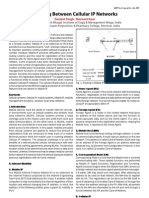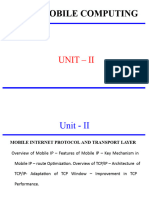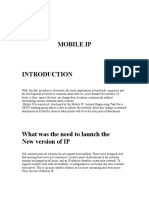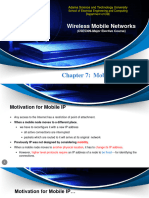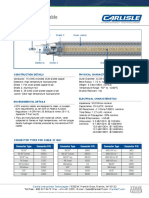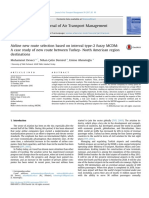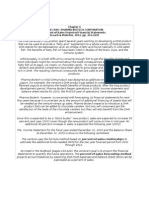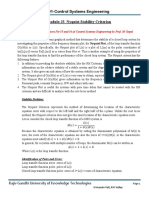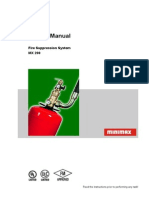Unit – II MOBILE INTERNET PROTOCOL AND TRANSPORT LAYER
Overview of Mobile IP–Features of Mobile IP–Key Mechanism in Mobile IP–route Optimization.
Overview of TCP/IP–Architecture of TCP/IP-Adaptation of TCP Window–Improvement in TCP
Performance.
Overview of Mobile IP
MOBILE IP
Mobile Internet Protocol (Mobile IP) was proposed by the Internet Engineering
Task Force(IETF).
The mobile IP allows mobile computers to stay connected to the Internet
regardless of their location and without changing their IP address.
Mobile IP is a standard protocol that extends the Internet Protocol by making
mobility transparent to applications and to higher level protocols like TCP.
Every mobile user likes to have continuous network connectivity irrespective of its
physical location
A correspondent node (CN) is connected via a router to the internet, and the
home network and the foreign network are also connected via a router, i.e. the
home agent (HA) and foreign agent (FA), respectively, to the Internet.
Home agent (HA) is implemented on the router connecting the home network
with the Internet, a foreign agent (FA) is also implemented on the router
connecting the foreign network with the Internet.
The tunnel for the packets towards mobile node starts at the home agent and end sat
the foreign agent, again here the foreign agent has the care-of-address(COA)
� Terminologies-MobileIP
• Mobile Node (MN): Hand-held equipment with roaming capabilities. Eg: cell phone, PDA, laptop,
etc.
• Home Network: The home network of a mobile device is the network within which the
device receives its identifying IP address (Home address).
• Home Address(HA):The home address of a mobile device is the IP address assigned to the device
within the home network.
• Foreign Agent (FA): A router in a foreign network that functions as the point of attachment for a
mobile node when it roams to the foreign network, delivering packets from the Home Agent to
the Mobile Node.
• Foreign Network(FN): The current subnet which the mobile node is visiting. It is different
form home network. A foreign network is the network in which a mobile node is operating
when away from its home network.
• Correspondent Node (CN): Home Agent is a router on the home network serving as the anchor
point for communication with the Mobile Node; it tunnels packets from a device on the Internet,
called a Correspondent Node, to the roaming Mobile Node.
Care-of-Address (COA): It is the address that is used to identify the present location of a
foreign agent.
• The packets sent to the MN are delivered to COA.
• The COA can be any of the following two types:
Foreign agent COA: The COA is an IP address of foreign agent(FA).
• CO-located COA: When the mobile node (MN) acquires a temporary IP address, that address
acts as the COA. (acquired using services like OHCP)
Home Agent (HA): It is located in home network and it provides several services for the
MN. HA maintains a location registry. The location registry keeps track of the node
locations using the current care-of-address of the MN.
• Agent Discovery: During call establishment it is necessary for a mobile node to
determine its foreign agent. This task is referred to as agent discovery.
• Agent advertisement
Agent Solicitation






























